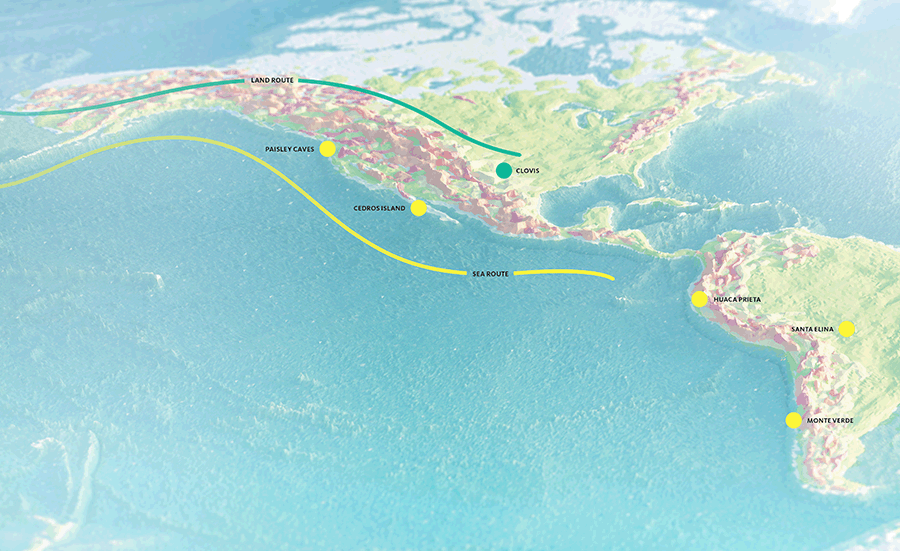Coming to America by Boat
One of the great mysteries and wonders of human history is how settlers reached the New World across vast oceans. Columbus reached the West Indies with the aid of advanced sailing ships and sophisticated metal instruments. But the first settlers were too primitive, right?
Until recently, secular archaeologists assumed they must have moved slowly with their families over land. During the Ice Age, the oceans were lower and a land bridge appears to have connected Russia and Alaska. Evidence also indicates that an ice-free passageway opened—briefly—in the middle of Canada’s ice sheets. The discovery of the earliest-known human remains in Clovis, New Mexico, in 1932 bolstered this view. Artifacts from these settlers, fittingly named the Clovis people, later appeared in many other inland locations.
New findings at far-flung outposts of the Western Hemisphere, however, began to challenge this view. In the late 1970s, archaeologists proposed the radical idea that an earlier wave of immigrants had come to America by boat.
This view fits in well with creationists’ view of human history. Based on Genesis, we know that descendants of the great shipbuilder Noah must have settled in the Americas soon after the Flood. Since these people were intelligent and skilled, it would make sense for them to rely on well-stocked boats rather than dangerous overland exploration.
Research is now pointing to water travel as the method of choice.

First by Land
The traditional view is that America’s first settlers arrived during the Ice Age and traveled down an ice-free passage into North America’s interior.
Clovis
The discovery of weapons and Ice Age animals at a New Mexico site in 1932 gave birth to the theory that America was settled by people traveling through the interior.
Actually, First by Sea
New discoveries of human artifacts all along the west coast have convinced most archaeologists that the first American immigrants came by boat.
Paisley Caves
At caves in Oregon, archaeologists have found what appeared to be the oldest human remains in North America, predating Clovis remains in the interior.
Cedros Island
Archaeologists have found artifacts on several coastal islands dated from the time of the Clovis remains. Even older sites may be underwater, covered by rising oceans at the end of the Ice Age.
Huaca Prieta
On Peru’s coast, researchers have found evidence of an early wave of settlers that came by sea.
Santa Elina
Archaeologists recently found evidence of humans hunting giant Ice Age sloths in western Brazil—earlier than any other places on this map! How did they get here, unless they came by boat and then trekked inland?
Monte Verde
The surprising discovery of a settlement so far south, older than the Clovis site, provides strong evidence that the first settlers moved rapidly by boat.
Answers Magazine
March–April 2018
The beach beckons us with its seashells. More than just ornate collectables, they testify to the Creator’s lavish provision for even the lowliest creatures. The Creator designed shells with mind-boggling features evolution can’t begin to explain.
Browse Issue SubscribeRecommended Resources

Answers in Genesis is an apologetics ministry, dedicated to helping Christians defend their faith and proclaim the good news of Jesus Christ.
- Customer Service 800.778.3390
- © 2024 Answers in Genesis







